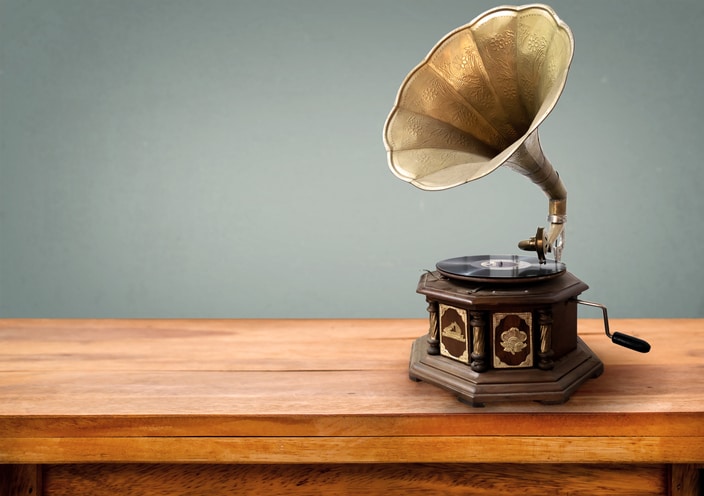
When I started to listen to vinyl again, a while back, one thing I quickly noticed was how hard it was to find good solid advice on how to choose the right turntable.
Most of the advice given by the online “experts” seemed to be not that well thought through at all. And sometimes, strictly false.
And another problem was that I really didn’t know what I wanted in a turntable. What features, benefits and functionality that was important to me.
So I ended up buying a turntable with a very good reputation. Loved online. But not the right one for me.
So now I have two turntables.
After learning from my first “mistake” and after doing some proper research, I upgraded the Audio-Technica AT-LP120-USB I first bought to a Rega Planar 2.
I love the Rega Planar 2.
It is the right one for me.
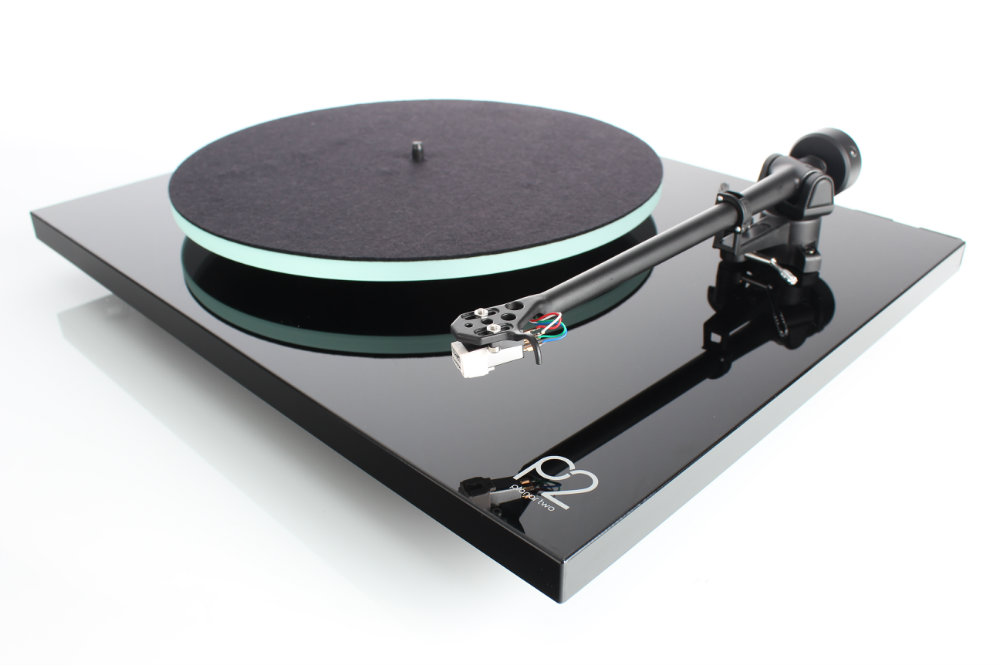
And every time there are kids in the house the LP-120 gets all the love.
It is the right one for them.
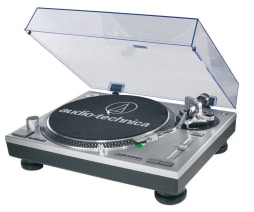
Now, that I am a lot farther on my vinyl journey I wanted to write this article to give everyone out there that is new to vinyl the very best and most complete recourse possible on how to choose the right turntable.
I will give you a total list of the features, benefits, functions, and differences to be aware of when deciding on a turntable. And a few other type factors as well. So that you are better suited to make an educated choice for your next turntable.
I have grouped this into 29 factors to consider when choosing the right turntable.
Here they are. From number 1 to number 29. In no particular order. Enjoy!
#1
Your level of passion for hi-fidelity sound
Music carved into vinyl records has the potential to reproduce clear, warm, amazing hi-fidelity analog sound. This is why so many HiFi enthusiasts never left the format. And why many of them play records on stereos that cost more than a brand new car.
But most people don’t need a ten thousand dollar HiFi stereo to enjoy music. When diving into the vinyl world as a newbie, it might be wise to not forget what is important (and necessary) for you to enjoy music. And don’t let other enthusiasts and marketers push you out of your comfort zone when it comes to how much money you need to spend on a turntable and stereo to enjoy music your way.
A high-end stereo system will produce deeper and tighter bass, a clearer top-end, a bigger stage, and a more involving music listening experience compared to an entry-level stereo. No question.
But as more and more money is spent, the sound quality improvements get smaller and smaller.
So the trick is to find the sweet spot between what you need to enjoy music and how much you want to spend on a turntable and other stereo components.
#2
Your budget
Turntables cost from about $50 to $20,000. Or even more. So there is probably a match for every budget. Turntables that cost less than $100 have a reputation to potentially be hard on your record collection (wear and tear) so it might be smart to save up at least $100 before you pull the trigger. There are several good entry-level and lower mid-range turntables to choose from between $100 and $400 if you are a beginner.
#3
Listening or DJ
There is a difference between turntables built for music listening at home and DJ turntables. Home listening turntables are built to minimize noise, optimize tracking and music fidelity. DJ turntables (professional turntables) are built to be robust, durable, and to have high torque. The aesthetics/design will also be different. DJ turntables are direct-drive and use a DJ stylus. Home listening turntables are generally belt-drive and have a stylus not recommended for DJ.
It is perfectly fine to use a DJ turntable for music listening at home. On the other side, using a home listening turntable for DJ will not work. The belt will probably break at some point and the non-DJ stylus can destroy your records. And it will not have the necessary torque.
If you are new to vinyl, and want a turntable to both DJ and listen to music, the Audio-Technica AT-LP120-USB with a DJ stylus is probably the obvious choice for an entry-level turntable.
#4
Record Player or Turntable
Most people tend to think about turntable and record players as the same thing. But it is really not. A record player is an all-in-one device that can play music from vinyl records without any additional components. Turntable, amplifiers and speakers are all built into one box. A turntable, on the other hand, is only the device that spins the record, and will need an external amplifier, speakers etc. to play music.
Record players generally have small built-in speakers and the sound quality will be limited by that. They are also rumoured to be hard on records (as they tracking force are often high) so if you have a record collection that you love it is important to do your research before bringing home a cheap record player. And start destroying your records.
Turntables above the $100 mark are generally of much higher quality than record players. And as standalone speakers are generally of higher quality than the ones built into record players, the potential for high-fidelity sound is much higher with a turntable than a record player.
#5
Portable or fixed
Suitcase style record players look cool but if you are not going to drag it around, buy a fixed turntable. And hook it up to external speakers. The music listening experience will be much better.
Just my opinion. Please don’t sue me. Or hate me.
#6
New or used
The turntable is an old and pretty simple design. Turntables made nowadays are pretty much the same as the turntables made in 1975. Which means that there are a lot of opportunities to find good turntables on the used marked that can be bought for half the price or less of a new one. They aren’t outdated after a few years. So the question is, buy new or used? And buying used doesn’t necessarily mean buying a 40 years old one. You can often save 50% by buying one that is a couple of years old.
It is generally good advice that if you considering spending a lot of money on a vintage classic, that you should really know what you are doing. You should know how to look for potential malfunctions, how to fix them and what it will cost. And be sure that the parts needed to repair any malfunctions actually is possible to obtain. That is not always the case with vintage turntables.
Buying an entry-level or mid-range turntable that is a few years old is, on the other hand, generally low risk. Make sure to inspect the turntable, interview the previous owner and test that every feature is working as it should. And that it sounds like it should. Before completing the deal.
#7
Popular or under the radar
Some turntables are very popular and get a lot of hype and reviews on Amazon. And some turntables, even very good ones, pretty much go under the Amazon radar.
It is easy and safe to go to Amazon, browse for the most reviewed turntable model, and pull the trigger. But there are some really good buys that tend to not show up on the top of the Amazon list, so it might be worth to spend a minute checking which products that get the highest recommendations on other websites as well. whathifi.com is a good trustworthy source to do read additional reviews. As well as turntable forums online.
#8
Entry-level, mid-range or high-end
One way to categorize the turntable marked is to split it between entry-level (or affordable), mid-range and high-end.
Entry-level is turntables in the $100-$400 price range, mid-range $400-$1000 and high-end above $1000. These are not absolutes, but this is more or less the generally accepted price ranges for these categories.
There might be a few audiophiles around that will argue that you can’t buy a new high-end turntable for $1000. But I believe you will get out at least 90% of the sonic potential in a vinyl record with a $1000 turntable. So I consider that the start of the high-end category.
And I think the $400 mark more or less is the price spot where you can buy a turntable that you can enjoy for the rest of your life without ever needing to upgrade ever. And hook up to a pretty decent HiFi stereo without having the turntable to be the “week link” in your HiFi chain.
#9
Wear and tear on records
Turntables and record players in the sub $100 price range are often claimed to be hard on records. Potentially destroying records. The main reason being that there are designed to have quite high tracking-force. And that the tracking-force is not adjustable.
So if you have a record collection you love, or are planning to build one, playing your records with a very low-cost turntable or record player can be a bad idea as your records might be damaged. At least over time.
Good advice is probably to at least do some research before bringing home a $50 record player to make sure the one you choose is not a record-eater.
#10
Aesthetics
We can put turntables (including record players) into five categories when it comes to aesthetics.
The cool looking suitcase style record players.
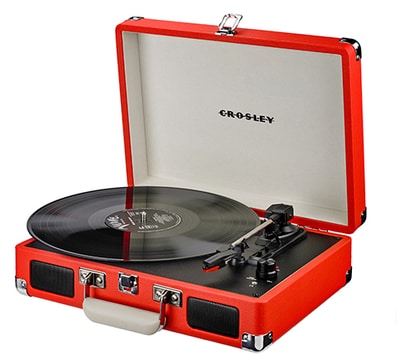
The simplistic turntable designs like most of the line up from Pro-Ject and Rega.

The professional looking DJ turntables like the Technics 1200 or the Audio-Technica LP120.

The classic looking ones like the Pro-Ject Classic or the Victrola Nostalgic Classic.
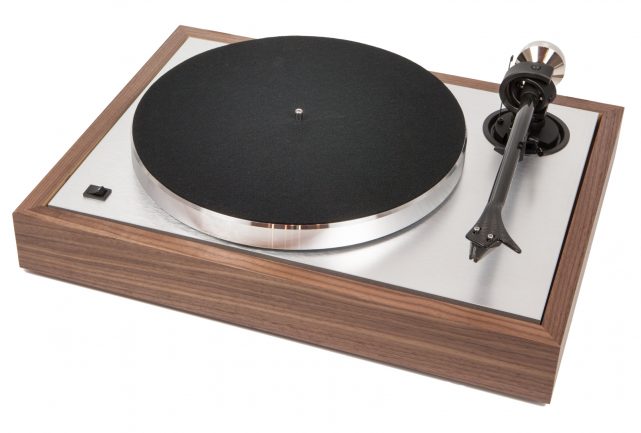
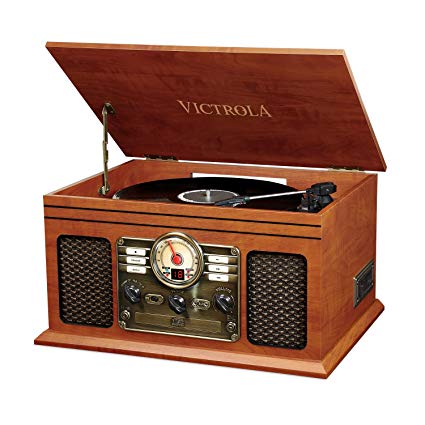
#11
Use with affordable or high-end amplifier and speakers
Whether you already have a stereo setup that you plan to add a turntable into, or you are planning to buy a complete stereo from scratch, the quality of the other components in the setup should be matched to the quality of the turntable.
A $600 turntable will totally outperform a $50 set of active speakers. You will not get out the sonic potential of the turntable in that setup.
Likewise, a $100 entry-level turntable will underperform in a $2000 Hi-Fi setup. The limitations of the turntable will probably be quite noticeable.
One general guideline, at least when entering the mid-range and high-end categories, is that you should put 50% of the money into the speakers, 25% of the money into the amplifier and 25% of the money into the turntable to get a balanced HiFi setup.
However, in an entry-level setup, you might want to up the turntable budget to about 50% of the total budget to get a balanced setup. Especially if you use powered speakers.
And the route most of us have to take is, of course, to start with something and upgrade to better gear over time.
#12
Standalone preamp or bundled with turntable
Turntables come with and without built-in preamps. In the entry-level and lower mid-range market, built-in preamps are common. But built-in preamps get less common as we get closer to and enter the high-end market.
A turntable with a built-in preamp will have a LINE signal output. A turntable without a built-in preamp will have a PHONO signal output.
A standalone preamp has the benefit that it is upgradable over time. And standalone preamps are generally of better quality than built-in ones. A good quality preamp is crucial as we get closer to the high-end spectrum. To extract the sonic potential of the record and the stereo. But for an entry-level setup, a built-in preamp will perform perfectly fine.
#13
Cartridge quality
The cartridge is one of two most essential components in a vinyl-playing stereo setup. The other one is the speakers.
The cartridge converts the physical grooves that are carved into the record into an electrical signal. And the speakers converts the electrical signal (after amplification) into sound waves in the air. So the cartridge and the speakers both transform the music from one physical form to another.
And therefore they have the biggest impact on the sonic performance of the stereo setup.
Entry-level turntables often come with fixed cartridges, while mid-range and high-end turntables usually come with replaceable/upgradable cartridges.
So two things to consider when buying a turntable are if the cartridge is fixed or replaceable. And the quality of the cartridge that comes standard with the turntable.
Upgrading the cartridge at a later stage can easily be one of the upgrades you can do to your stereo setup that will give the highest return of investment. Return in form of increased sound quality.
#14
Belt drive or direct drive
Direct drive turntables have the motor integrated with the platter. And belt drive turntables have a motor that is separated from the platter with a belt.
Direct drive turntables are always the choice for DJing as scratching etc. will destroy the belt in a belt drive turntable. Direct drive turntables also have more torque which is desired by DJs.
Most listening turntables are belt drive. As the motor is separated from the platter belt drive turntable is generally considered to produce less noise/hum and have a better signal-to-noise ratio.
#15
Manual or automatic
Manual turntables require you to manually move the tonearm to the record when starting to play a record and manually move the tonearm back again after the last song is ended.
In an automatic turntable, you can push a button and the tonearm automatically moves to the first song on the record. And when the last song is finished, the tonearm automatically lifts and return, and the record stops spinning. So if you get distracted and forget about the record playing, it won’t keep spinning at the inner grove forever.
High-end turntables tend to be manual to have as little mechanical and electrical functionality that can interface with the signal as possible. That is why many high-end turntables have a very plain and minimalistic look.
#16
Wireless or cable
The traditional way to connect turntables to a preamp/amplifier or to powered speakers is by using RCA signal cables. But there is also possible to connect a turntable to speakers wirelessly. To do that a Bluetooth wireless turntable and Bluetooth wireless speakers are necessary. (You can also use a standard turntable with built-in preamp and a Bluetooth transmitter.)
Be aware that there are two types of wireless speakers. Bluetooth and WiFi. Only Bluetooth wireless speakers will connect to a Bluetooth turntable.
And as part of the magic with turntables are that they are truly analog, you will ruin the fully analog music experience by connecting wirelessly. As the analog signal from the cartridge must be converted to a digital music stream to be transferred wirelessly.
So my vote goes to sticking to the good old RCA connectors! And keep your stereo setup analog approved! No Bluetooth!
#17
Pitch control
Some turntables offer pitch control. With pitch control, you can change the speed of the record so that it spins slower or faster. Cool if you DJ. But not at all necessary if you buy a turntable to listen to music only.
#18
LINE or PHONO
Some turntables output a PHONO signal and some turntables output a LINE signal.
A turntable that outputs a PHONO signal needs to be hooked up to an external preamp. Or to a receiver with built-in preamp.
A turntable that outputs a LINE signal has a built-in preamp. And can be hooked up to any amplifier/receiver or powered speakers directly.
If you do not have a receiver with built-in preamp, and do not plan to buy a standalone preamp, it is crucial that you buy a turntable with built-in preamp. Check if the Turntable has a LINE signal output.
To connect a turntable directly to powered speakers the turntable must have a LINE output (built-in preamp).
#19
Speed, 33, 45, 78
A record can be produced to be played on 33 RPM, 45RPM or 78 RPM.
RPM stands for revolutions per minute and determines how fast the turntables spin.
A turntable set to spin at 45RPM spins faster than when it is set to spin at 33RPM.
Most turntables can spin at 33RPM and 45RPM. This is selected either by a switch or by adjusting the belt.
Some turntables also spin at 78RPM. But 78RPM records have not been produced since the 1950s or so. So if you are not certain that you will play super old records, don’t care about the 78RPM. Make sure you buy a turntable that can select between 33 and 45 and you are good.
If you have a collection of 78RPM records, also remember that they will need a different (ticker) stylus to play those records.
#20
Signal to noise ratio
One thing audiophiles tend to freak out about is unwanted noise or hum coming from the turntable through the speakers. As the signal from the cartridge is so tiny, and need to be amplified a lot before it reaches the speakers, it is difficult to totally eliminate noise. As tiny noise and vibrations picked up by the cartridge are amplified a lot too.
For most avid music listeners this is usually very tolerable. Not a big deal. But it is, however, wise to pay a little attention to the signal-to-noise ratio in the turntables spec sheet. Everything above 60dB is good. If it is far below that, noice/hum can be noticeable.
#21
Preamp quality
Preamps built-into entry-level and mid-range turntables will usually not be of top quality. Upgrading to a 100$-200$ standalone preamp can give a noticeable improvement of the sonic performance. So if hi-fidelity sound is the route you are on, it might be wise to plan for a standalone preamp from the get-go and not be locked into buying a turntable with a built-in preamp.
#22
USB or not USB
Turntables come with and without USB. Turntables with USB has the functionality to connect the turntable to your computer to convert your records into digital music formats.
If you have a big record collection and want to digitalize it, this is a feature to look for. But if you don’t have a big record collection, and like most of us, have a membership to stream digital music all you want anyway, this is probably a feature you will never use.
#23
Adjustable or fixed tonearm
An adjustable tonearm means that you can adjust the tracking force and anti-skate force so that it is just right. This is essential to not damage records. And for optimal sound quality. To high tracking force is the major problem on sub $100 record players that are known to eat records.
#24
Upgradable or fixed cartridge
The turntable’s cartridge is the hearth of the turntable. It converts the physical grooves in the record to an electrical signal. The best way to upgrade the sonic performance of a turntable is to upgrade the cartridge. This is hoverer not possible on all turntables, as some entry-level turntables come with fixed cartridges. So this is something to look out for if you plan to upgrade your turntable at a later stage.
#25
Big record collection or starting to build one
If you have a big record collection it might be worth it to skip the entry-level turntables and buy something in the mid-range that is of higher quality and that can last a lifetime. If you spent all the time and money on collection all those amazing records, it might make no sense to enjoy them on a $100 record player.
If you, on the other hand, are just starting out on your vinyl journey, it will make more sense to start with a budget turntable to see if listening to records and collecting records are something you will truly enjoy. Or if it is something that was not quite right for you to spend time and money on.
#26
Your stereo shelf space
If you have little room to fit a HiFi stereo, a good option might be to buy a turntable with built-in preamp and connect it to powered speakers. Then you will not need to space a preamp and an amplifier/receiver.
#27
Listening room acoustics
The best stereo in the world will not sound good in a room with terrible acoustics. If you have a room with little furniture and hard surfaces (concrete, bricks, etc.) sound waves that are not dampened will significantly reduce the sound quality. So to get the most out of an expensive turntable, good acoustics will be necessary. There are a lot of things that can be done to improve the acoustic performance in a room. Adding carpets, furniture, bookshelf, and gear specially developed for the job. But some of the measures might not be too “wife-friendly” tho.
#28
Turntable Weight
In general, heavy is good as it will help reduce vibration. That is also true for the shelf/furniture the turntables sit on. Heavy is good. Light and unstable not so good. As small vibrations can be picked up in the cartridge and amplified with the music signal, keeping vibrations as low as possible is key to get the most performance out of any turntable.
#29
Difficult or easy to set up
Some turntables come out of the box ready to play records. And other models will need a fair bit of assembling. The picture below shows all the parts that were included in the box when I got my Audio Technica LP120.
It was not too hard to put it together, but if you are not technically savvy at all, putting everything together might be a bit of a challenge. There are turntables that comes out of the box much more ready to play than this.
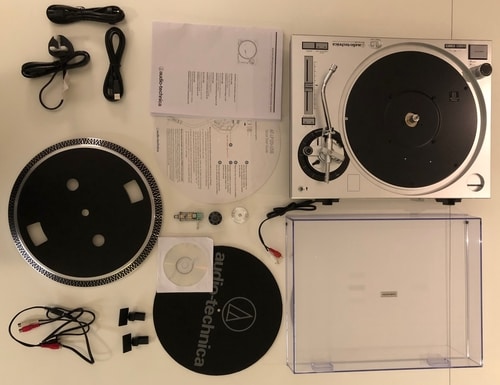
Endnote
If you have gone through the entire list, I hope you have learned a thing or two that will make you more confident in your turntable buying decision.
Thank you for reading. And good luck!